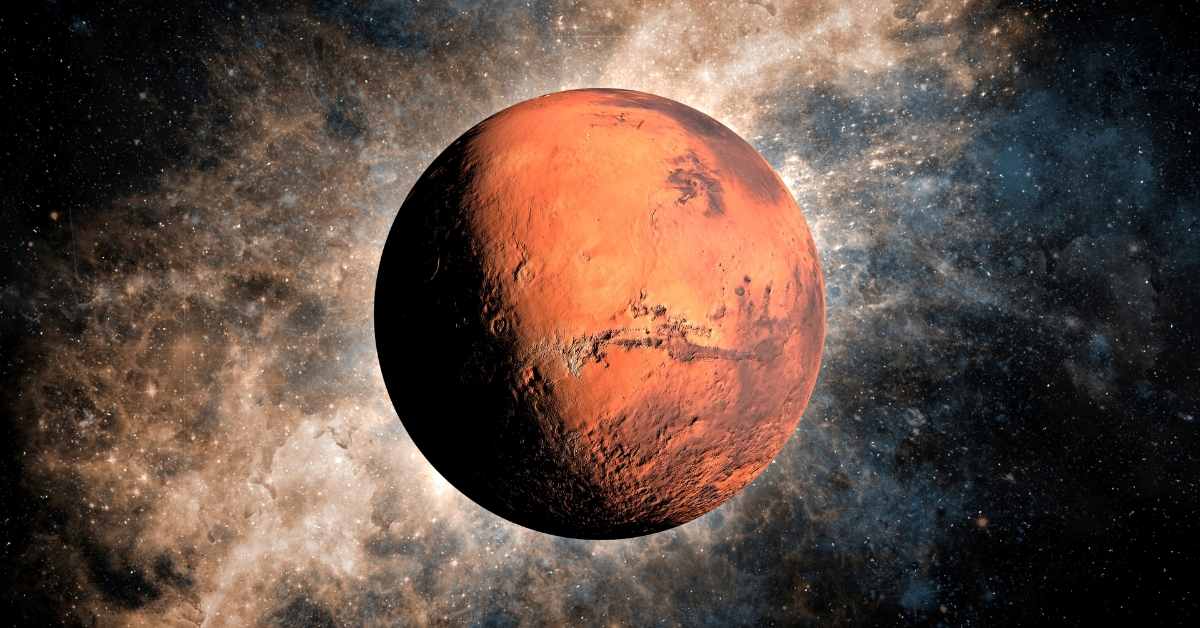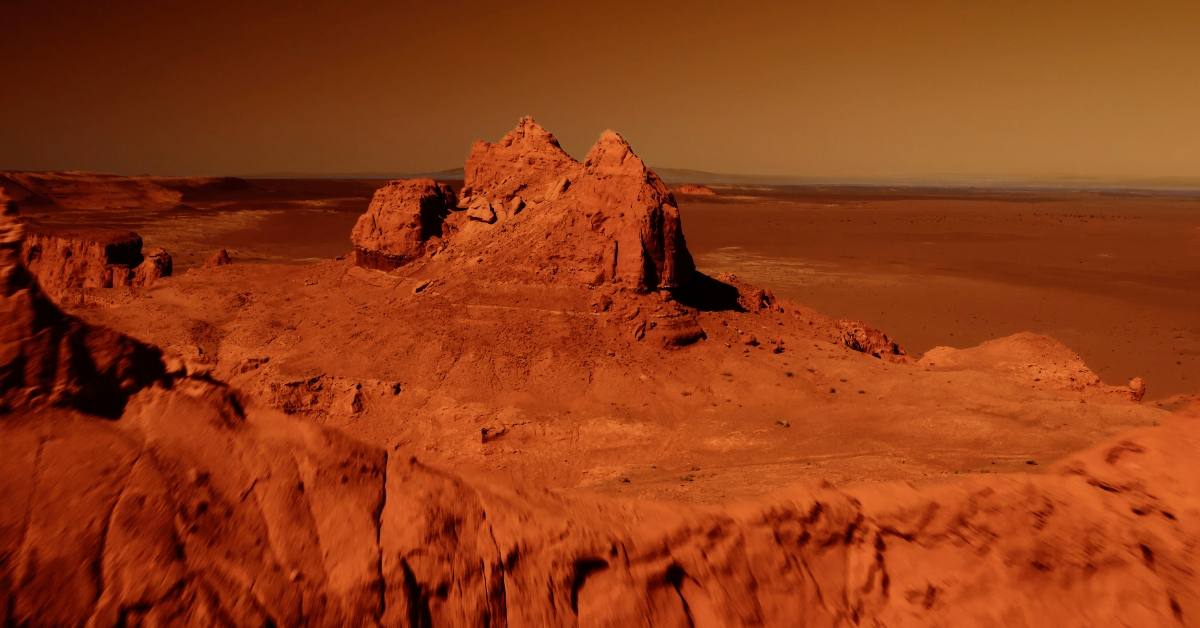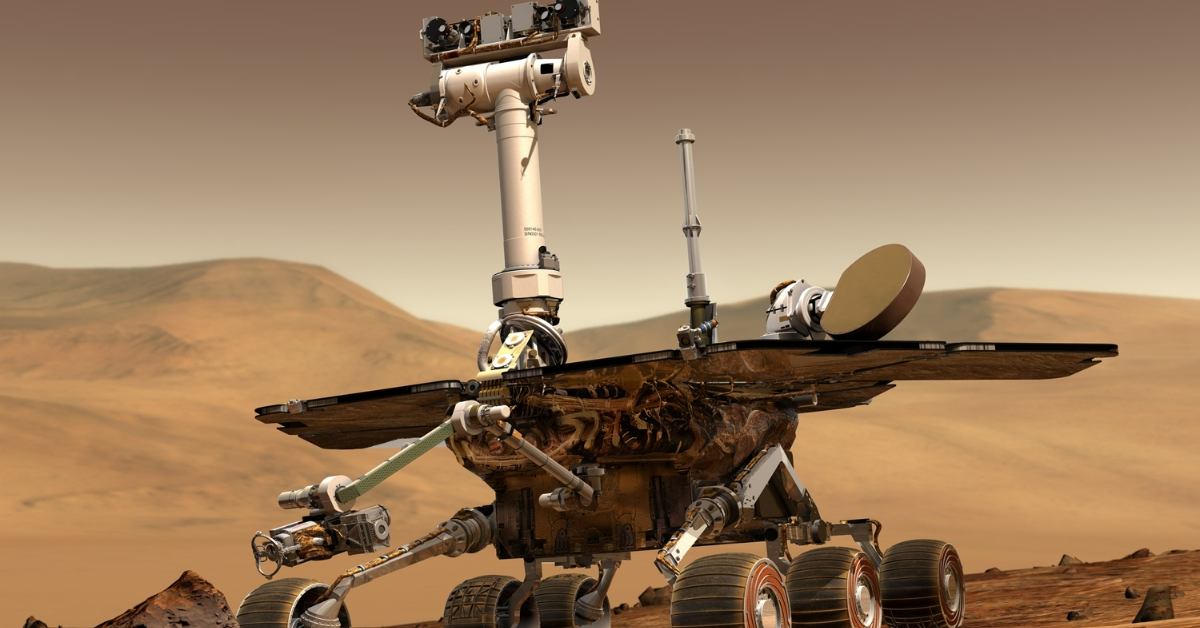The solar system consists of 8 planets, including Mercury, Venus, Earth, Mars, Jupiter, Saturn, Uranus, and Neptune. Each planet has its own unique characteristics, such as size, composition, and atmosphere.
For instance, Uranus is known as the green planet due to its methane-rich atmosphere. But do you know which planet is known as the red planet of the solar system? If not, let's uncover this mystery together.
In this article, we will explore the distinct features of this enticing red planet, which is known for its reddish hue due to its iron oxide-rich soil.
Check Out| List of Astronomical Events 2025: Don’t Miss These 10 Amazing Upcoming Astronomical Events in India
Which planet is known as the “Red Planet”?

Mars is commonly referred to as the "Red Planet" due to its reddish appearance, which is a result of iron oxide (rust) on its surface. Here are some interesting facts about Mars:
Characteristics of Mars
- Atmosphere: Mars has a thin atmosphere composed mostly of carbon dioxide, with traces of nitrogen and argon.
- Surface Features: The planet features the largest volcano in the solar system, Olympus Mons, and a massive canyon system called Valles Marineris.
- Moons: Mars has two small moons, Phobos and Deimos, which are thought to be captured asteroids.
For You| From New Moon to Full Moon: Understanding the 8 Moon Phases
Why is Mars called the "Red Planet"?
Mars is called the "Red Planet" primarily due to the presence of iron oxide, commonly known as rust, present on its surface. This iron oxide gives Mars its characteristic hue when viewed from Earth and space.
Reasons for the Name
- Iron Oxide Presence: The surface of Mars is covered with iron-rich minerals that oxidise, creating a rusty colouration.
- Cultural Significance: Historically, various civilisations have named Mars based on its colour; for instance, the ancient Egyptians referred to it as "Her Desher," meaning "the red one."
Visual Appearance
From a distance, Mars appears reddish-orange, but closer observations reveal a variety of colours, including butterscotch and golden tones due to different mineral compositions in various regions.
How Does the Iron oxide on Mars form?

Iron oxide on Mars, which gives the planet its characteristic reddish hue, forms through a series of complex processes involving the interaction of iron with oxygen over billions of years. Here’s a simplified explanation of how this occurs:
Formation Process
- Presence of Iron: Mars has a significant amount of iron in its soil and surface materials, originating from the planet's formation about 4.5 billion years ago.
- Unlike Earth, where much of the iron sank into the core, Mars retained a lot of iron in its upper layers due to its smaller size and weaker gravity.
- Oxidation: The iron on Mars becomes oxidised, which means it reacts with oxygen to form iron oxides. This process can happen in several ways:
- Weathering: Ancient rainstorms on Mars may have provided the necessary conditions for oxidation by introducing oxygen from water molecules.
- Atmospheric Reactions: Over time, sunlight can break down carbon dioxide and other atmospheric molecules, creating oxidising agents like hydrogen peroxide and ozone that can react with iron.
- Dust Storms: Martian dust storms could also contribute to oxidation by exposing fresh surfaces of iron-rich minerals to oxygen.
- Types of Iron Oxides: The primary form of iron oxide found on Mars is iron(III) oxide (Fe₂O₃), which appears red because it absorbs blue and green light while reflecting red light. Other forms include haematite and maghemite, which can form under different conditions.
- Nanophase Iron Oxides: Some studies suggest that very small particles of iron oxides, known as nanophase iron oxides, are also present in Martian soil.
- These tiny particles may have formed through ongoing weathering processes that prevent them from growing into larger crystals.
- Distribution: Ferric oxides are widespread across Mars, found in the crust, lava flows, and dust particles. Their distribution is mapped and shows varying levels of oxidation across the planet's surface.
Discover| How Long Is A Year On Other Planets?
10 Amazing Facts About Mars

- Fourth Planet from the Sun: Mars is the fourth planet in our solar system, situated between Earth and Jupiter.
- The Red Planet: Its reddish colour comes from iron oxide, or rust, on its surface, similar to how an old bike rusts when left outside.
- Long Year: A year on Mars lasts 687 Earth days, almost twice as long as a year on Earth.
- Thin Atmosphere: Mars has a very thin atmosphere composed mostly of carbon dioxide, making it impossible for humans to breathe without spacesuits.
- Seasons Like Earth: Mars experiences four seasons due to its axial tilt of about 25 degrees, similar to Earth.
- Size Comparison: Mars is about half the size of Earth, with a diameter of approximately 6,791 kilometres.
- Extreme Temperatures: Temperatures on Mars can vary widely, reaching up to 20°C at the equator but dropping to -140°C at the poles.
- Olympus Mons: Home to the tallest volcano in the solar system, Olympus Mons stands about three times taller than Mount Everest.
- Named After a God: Mars is named after the Roman god of war, reflecting its red colour reminiscent of blood.
- Robotic Exploration: Numerous robotic missions have been sent to Mars, including rovers like Perseverance, which landed in 2021 to explore the planet's surface and search for signs of past life.
Comments
All Comments (0)
Join the conversation